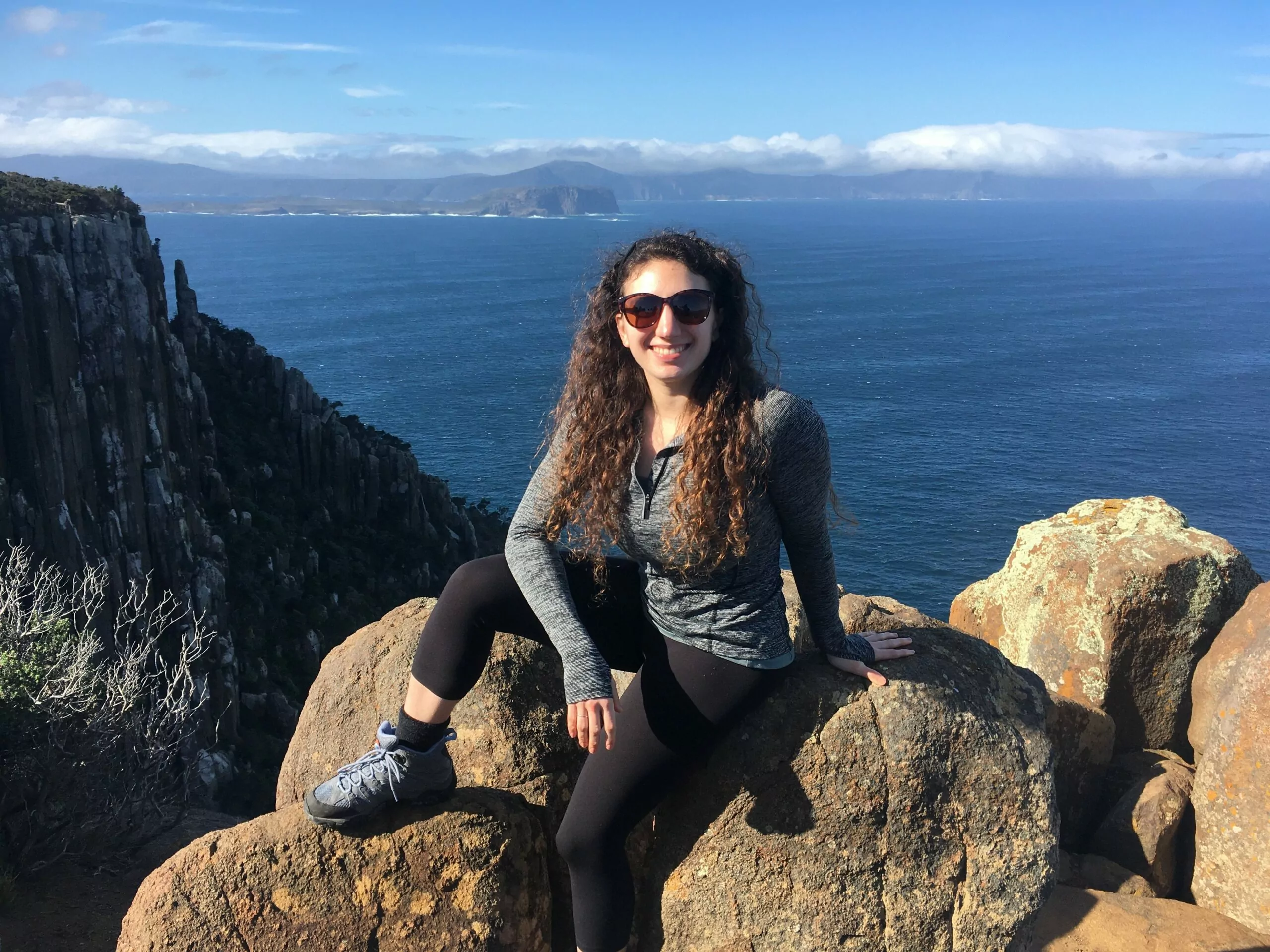Home > Scientists > 2022 > Sofia Gabriel

Sofia's Notable career moments
-
Took my first marine biology course at university
-
Got a research internship at an aquarium
-
Became a certified rescue diver
-
Travelled to Rome as a paid consultant for the FAO
-
Completed a two-year Master's Degree in marine biology
-
Began my PhD on fine-scale coastal white shark movement
About Sofia Gabriel
When I was young, I used to hate swimming at the beach. The idea of sharks moving around under the waves where I could not see them made me scared to go into the water. As I grew up, however, and began to learn about the different sharks that lived off the shores of my home in Massachusetts, USA, I became less and less scared and more and more fascinated with how and why sharks move around in this underwater world. I began to ask questions like, what do sharks do under the water when we cannot see them? and, where do sharks like to go and why?
As a scientist now I try to answer these questions. Because sharks live and breathe under the water and can swim long distances and go deep into the ocean, further and deeper than I could follow by myself, to study how these animals move and behave underwater I have to use lots of different types of technology. Sometimes I use underwater robots that can follow the sharks down deeper than humans can go, and that can carry things like cameras so I can directly see what the sharks are doing. In my work now, I use special tags that send out signals every few seconds with a unique name that identifies individual sharks. When the shark swims close enough to receivers placed out in the ocean, these receivers are able to hear and record the tag name, telling where and when individual sharks are present in different areas of the ocean.
One thing I love about being a shark scientist is that I can follow sharks all over the world. First, I followed the movement of sharks all the way over in the Atlantic Ocean off the east coast of the USA. Now I have moved to Tasmania, and I am following young sharks as they move around off the coast of Hawk’s Nest in New South Wales. When I am not busy following sharks, I love to go bushwalking to see the amazing scenery and unique animals found in Tasmania.